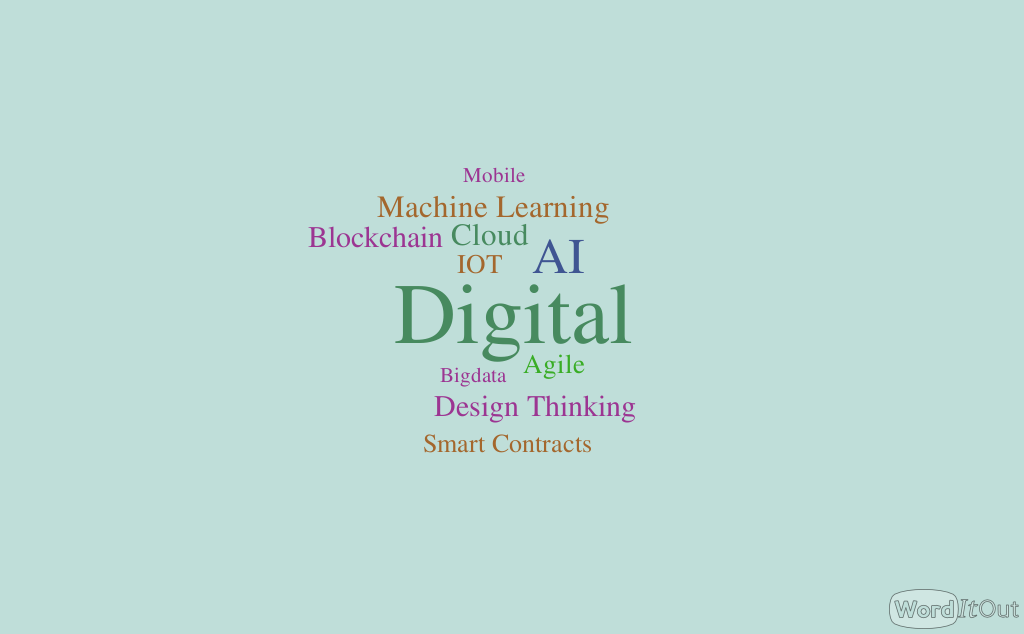All enterprises continuously strive to trim their bottom line through operational efficiencies and grow their top line by enhancing customer experiences and discovering new revenue streams. An appreciation for how the Digital Economy functions is key in accomplishing this for the new age enterprise. In doing so, many challenges and opportunities present themselves. As always, decision-makers look for clarity in terms of what potential benefits can be realized and when. There is also a need to understand (and plan for) impacts to various stakeholders including employees, customers, vendors/other business partners. This article explores these aspects and some thoughts on what elements that could be part of an organization’s Digital Strategy and a roadmap to executing on the strategy.
Digitization & Digitalization
A key aspect of this is the difference between
digitization and
digitalization. Others have written about this and there are many definitions that have been proposed in the recent past. Hopefully, some examples from our daily routines can help clarify this distinction.
Until recently, most professionals had a habit of keeping a record of meetings and events in a physical(paper) calendar/diary. Sometimes, maintaining separate diaries for personal life, social commitments, and official meetings. When software tools like Outlook/Google calendars became more ubiquitous, the calendars were
digitized. Once the data is available in digital format, some of the advantages become apparent - for example, having a better understanding of one's availability as schedules from multiple
digitized calendars are
digitally superimposed. We can also create more digital experiences like finding the earliest time when multiple parties can meet based on availability as published in their digital calendars.
This simple example hopefully illustrates the difference between digitizing and being digital. Digitization is the process of converting data that exists in a physical form into a stream of bytes. Being digital is the ability to use that digitized data to gather information that is useful in performing higher order activities and redefine processes to make things better. This data is typically consumed in tools from analytics, artificial intelligence, process modeling and the like.
Let’s look at a specific illustration from the restaurant industry where these concepts apply. The typical workflow when we visit an establishment.
This thread on yahoo answers details the workflow behind the order/ticket system for a typical customer. An abridged version: a) Someone jots down food orders. b) Order queued up for preparation by the kitchen staff C) Food order prepared by kitchen staff. d) Food is served to the customer. e) Customer pays the bill. There could be variations, for example, in a fast food establishment, we pay at the time of ordering.
Now, this system can be digitized by recording orders using a software system. Digitizing the order allows us to be more efficient at some things. If the goal is to provide faster service to our customers, it may be possible to tweak the systems/workflows to achieve this. However, we should know what to tweak. Are customers waiting a long time to place their orders or are they waiting longer to get their food once their order is placed? Does the answer change by time of day? Once we know the answers to these questions, the solutions may be more apparent. If customers are having to wait to place the order or if food is taking longer to reach their tables after it is prepared, then we can look at a different set of solutions. Options may include increasing the front office staff or taking the digitization closer to the edge. Like we see in many eateries at airports, customers seat themselves and order food from a device on their table or from their phones. On the other hand, if the bottleneck is in the kitchen, we need more staff/automation in the backend. Some establishments allow customers to self service themselves partially as they serve their own soda from a dispenser. We can analyze data from the first wave of digitization to understand the problem better before rushing into a solution. This process of using analytics to understand the bottlenecks, what to optimize and tweaking workflows is
being digital.
From the above scenario, one can perceive how digitization is a prerequisite for digitalization. Digitization becomes an operational necessity. Typically, this step involves higher investment and requires the blessing of executive management. Once an enterprise is digitized, folks on the ground would feel empowered to create efficiencies. Analytics will help them move forward with solutions to optimize based on evidence as opposed to just intuition. Solutions are implemented with greater confidence thereby reducing risk.
Summary
Digitization is the process of creating a digital representation in bits and bytes of data that is present in a physical form such as on paper, documents and pictures. Digitalization is the logical next step; using the transformed data to create efficiencies through alternate operating models. This will increase customer delight and perhaps even create new business models.
In subsequent posts, I will share some thoughts on how technology enables organizations to be more digital; changes in the operating model will help accelerate this process; ways in which we can use technology to reimagine how work gets done; how this impacts the people in the ecosystem; how the nature of their work itself may change and changes in attitude that will help employees be successful in this new environment. I'll try to illustrate some ideas drawing from different industry segments.
